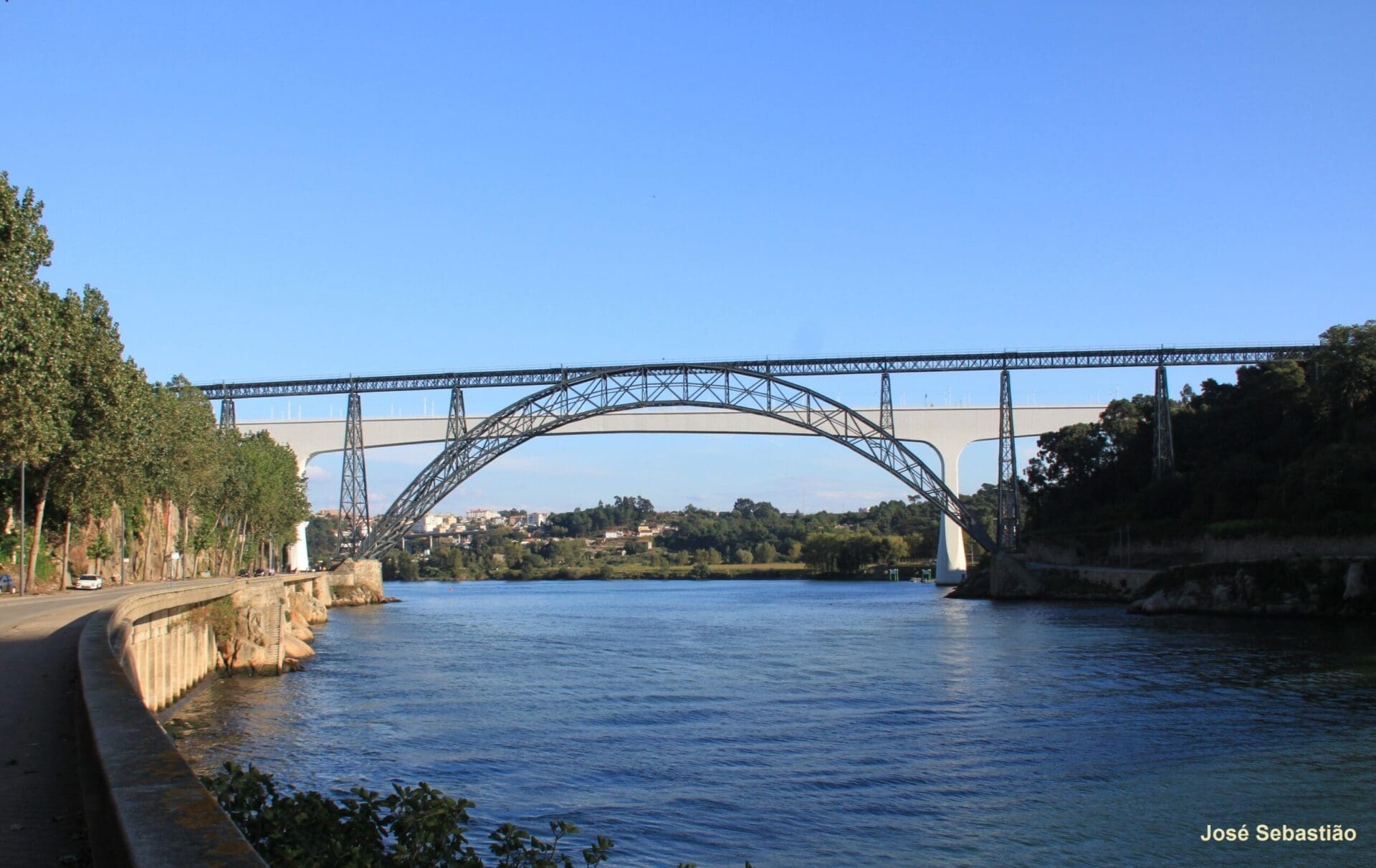Designed by Théophile Seyrig, Gustave Eiffel’s collaborator in the 19th century it was, in 1996, classified by UNESCO as World Heritage. It is composed by two boards united by an arch considered, when it was built, as the major steel arch of the world. It resembles a filigree piece.
Evocative of King Luís I wife, Lady Maria Pia de Sabóia, it was built by the company Eiffel Constructions Métalliques, under the direction of Gustave Eiffel. The opening occurred on the 4th November 1877 and it was closed on the 24th June 1991. It has a biarticulated arch that bears the single-track railway deck through lattice pillars. In 1982 it was classified as National Monument and in 1990, was classified by the American Society of Engineering as an historic mark of Civil Engineering.

 Vila Nova de Gaia, Northern Portugal
Vila Nova de Gaia, Northern Portugal









 Luiz I Bridge and Maria Pia Bridge
Luiz I Bridge and Maria Pia Bridge 




